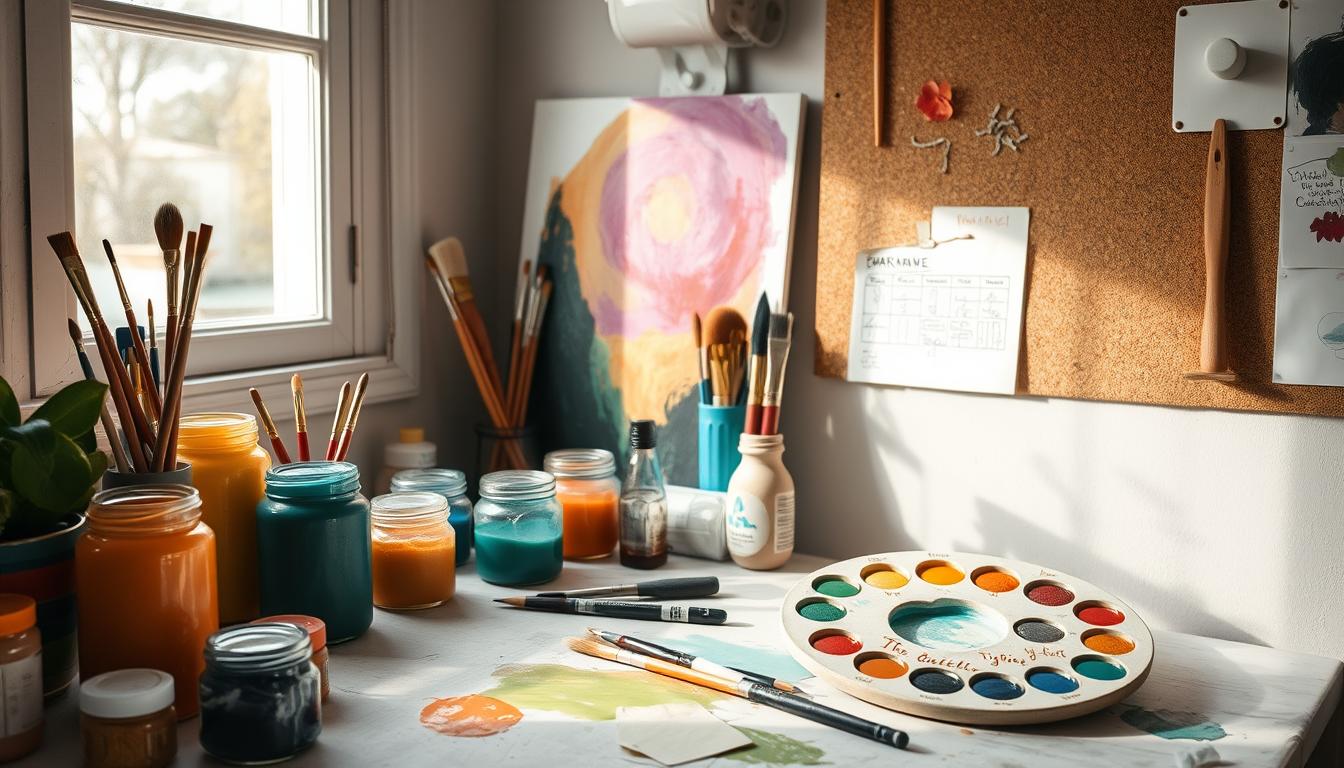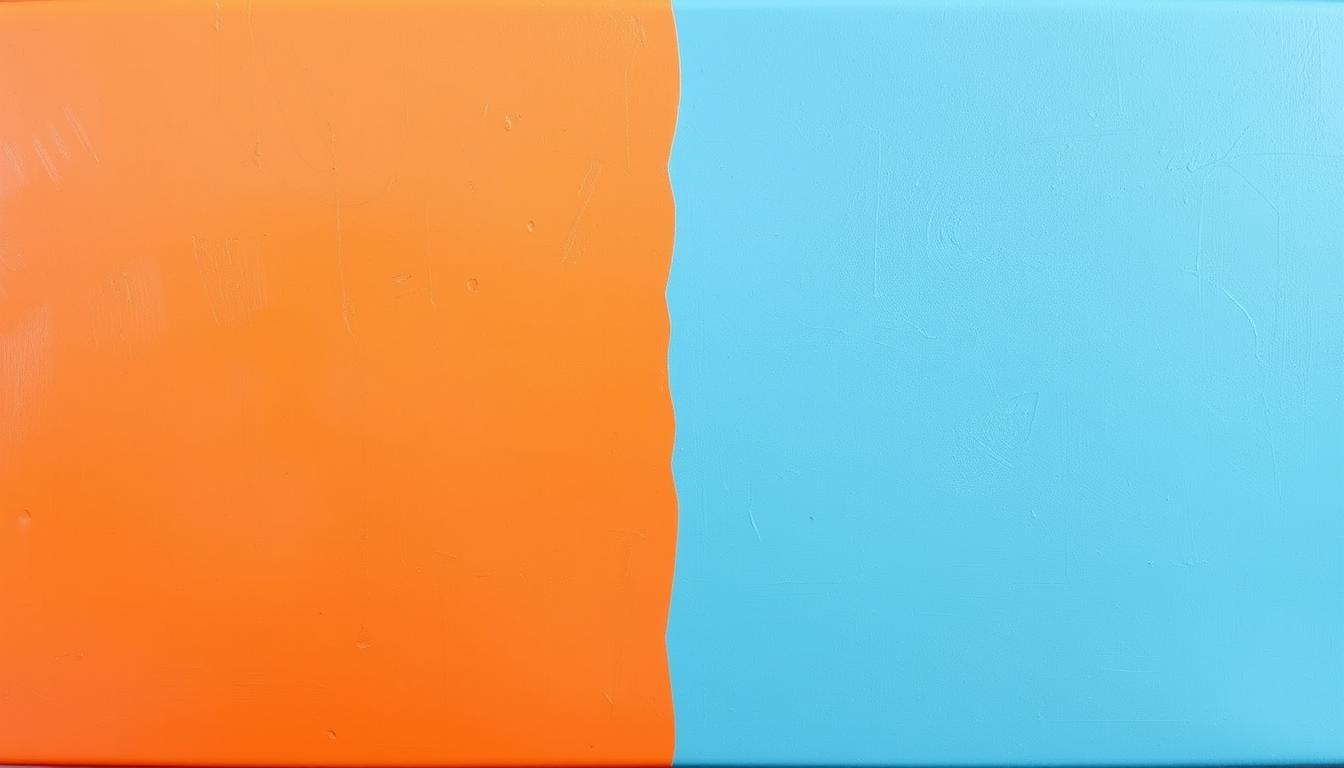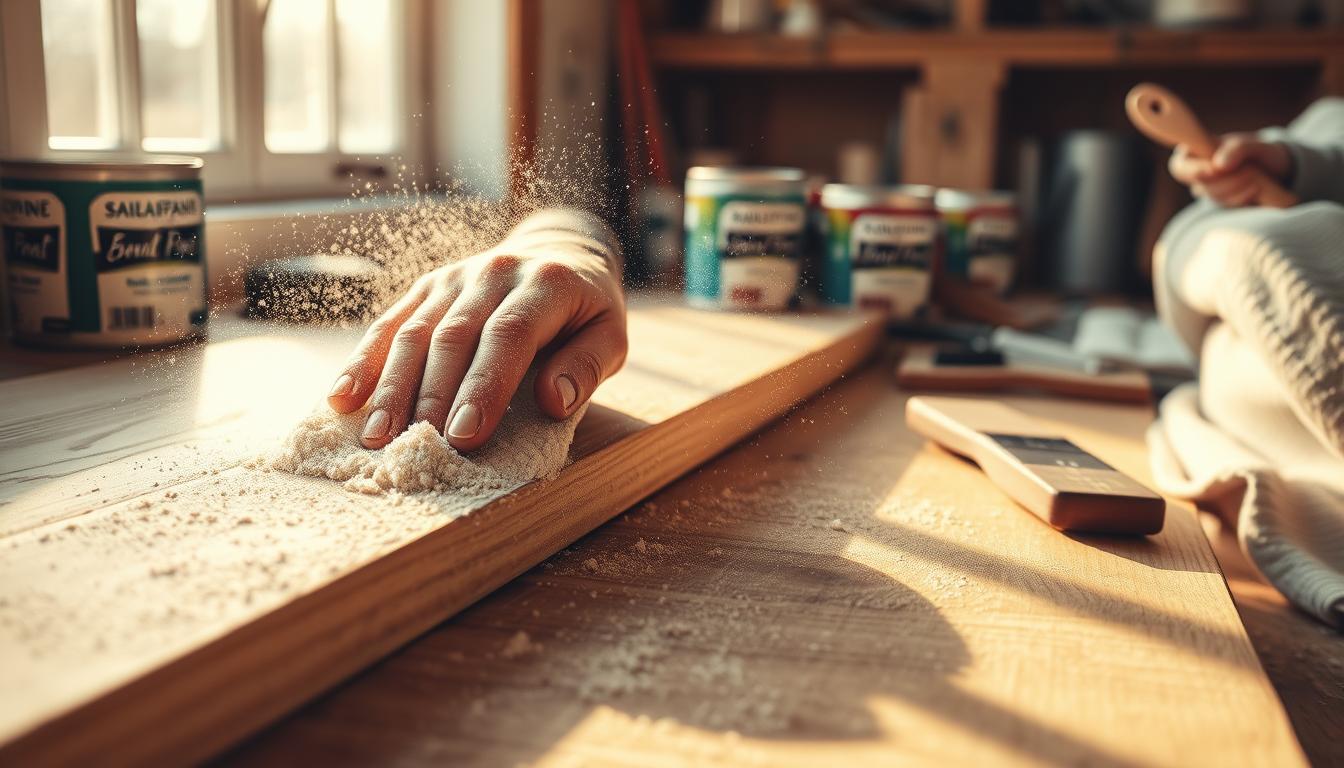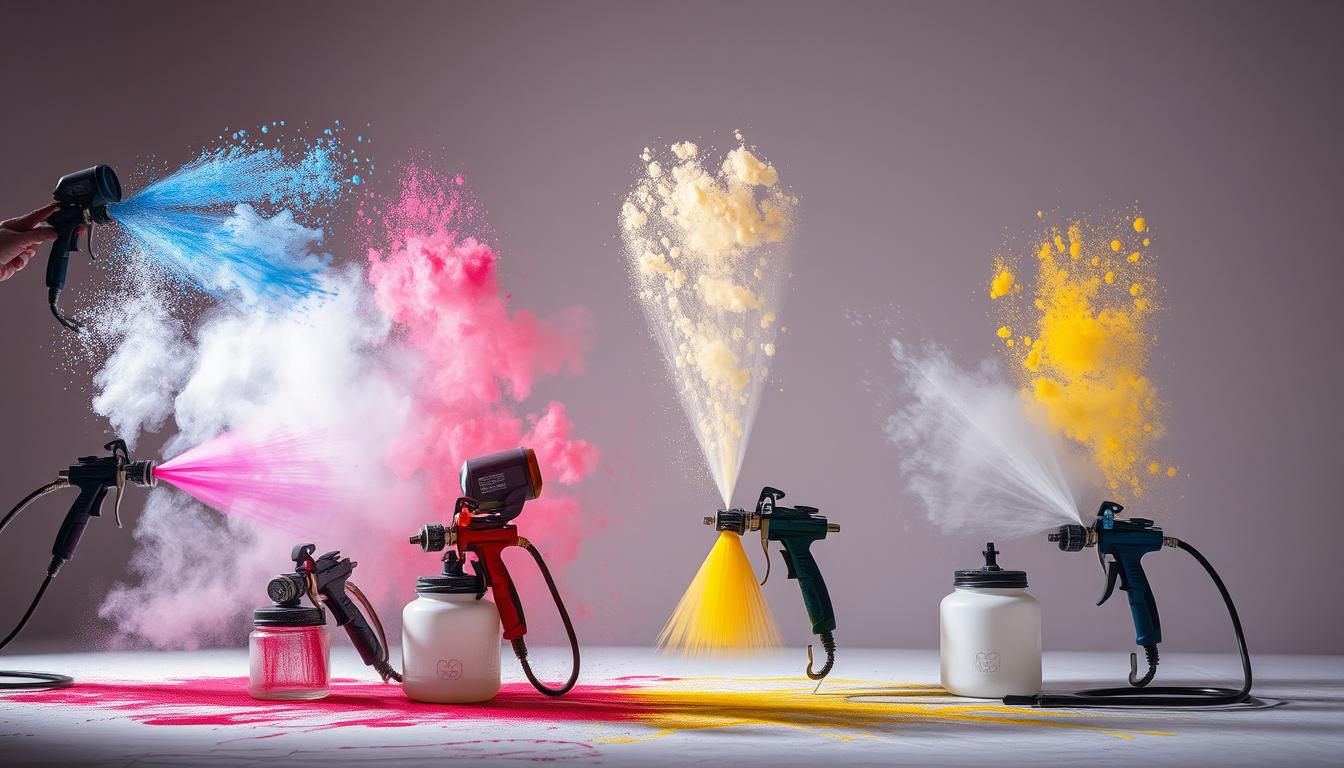Achieving professional painting results doesn’t have to drain your wallet. By using smart cost-saving strategies and budget tips, you can keep your painting project affordable. This way, you can maintain quality without overspending.
Knowing where to invest your resources is key to a successful painting project. With the right financial decisions, you can save a lot and still get the results you want. By sticking to your budget and watching your expenses, you can finish your painting job without going over budget.
Introduction to Budget-Friendly Painting
In this section, we’ll dive into the world of budget-friendly painting. We’ll show you how to get professional results without sacrificing quality.
Key Takeaways
- Implementing cost savings strategies can help reduce painting expenses
- Budget tips can help individuals make smart financial decisions
- Allocating resources effectively is crucial in planning a painting project
- Significant cost savings can be achieved without compromising on quality
- Following budget tips can help individuals complete a painting project without overspending
- Budget-friendly painting requires careful planning and execution
Understanding Your Paint Budget and Project Scope
When diving into value painting, grasping your budget and project scope is vital. This means figuring out total costs, setting a budget, and figuring out paint needs. By thinking through these aspects, you can choose affordable options that fit your budget and needs.
First, calculate the project’s total cost. This includes paint, materials, and labor expenses. Key factors to keep in mind are:
- Paint cost: Determine paint needs based on the area to be painted.
- Material cost: Account for brushes, rollers, and other project materials.
- Labor cost: If you’re hiring a pro, include labor costs and any extra fees.
Knowing these costs helps set a realistic budget. This way, you can pick affordable options for paint and materials, and consider labor costs. With a clear budget and project scope, you can achieve value painting that meets and exceeds your expectations.
Understanding your paint budget and project scope is crucial for a successful painting project. By considering these factors and choosing affordable options, you can get high-quality results without overspending.
| Project Factor | Cost |
|---|---|
| Paint | $100-$300 |
| Materials | $50-$100 |
| Labor | $200-$500 |
Smart Planning Strategies for Cost-Effective Painting
Painting projects require smart purchases to stay within budget. It’s essential to buy the right paint amount, choose the right tools, and plan well. This approach helps save money and ensures professional results.
To make smart purchases, consider these factors:
- Calculate the total area to be painted to determine the amount of paint needed
- Choose high-quality paint that will last longer and require fewer coats
- Select tools and materials that are durable and suitable for the project
Effective planning and informed purchasing decisions are key. They help save money and ensure a successful painting project.
Brands like Benjamin Moore and Behr offer high-quality paint options. Also, consider the cost of tools and materials, such as brushes and rollers. By planning ahead and making smart purchases, you can achieve professional results without overspending.
| Paint Type | Cost per Gallon | Coverage Area |
|---|---|---|
| Latex | $20-$30 | 350-400 sq ft |
| Oil-based | $30-$40 | 300-350 sq ft |
Essential Tools and Materials: Where to Save and Where to Spend
When painting, the right tools and materials are crucial for professional results. It’s vital to know where to save and where to spend to stay within budget. Money saving is key, and making smart choices can help save without sacrificing quality.
Distinguishing between must-haves and nice-to-haves is essential for money saving. For example, a quality paintbrush is a must, while a paint sprayer is a nice addition. This way, you can better allocate your budget.
Choosing quality paint without overspending is another critical aspect of money saving. Compare prices, look for discounts, and consider alternative brands. Also, exploring money-saving tool alternatives, like renting or buying second-hand, can cut costs.
Must-Have vs. Nice-to-Have Equipment
- Paintbrushes and rollers
- Paint trays and liners
- Drop cloths and tarps
Quality Paint Selection on a Budget
By being mindful of money saving opportunities and making informed decisions, you can achieve professional results without overspending.
Paint Budget Management Tips for Maximum Value
Effective paint budget management is key to achieving quality results. To maximize value, accurately estimating paint quantities and minimizing waste are crucial. Here are some tips to help you manage your paint budget:
A well-planned budget ensures you get the quality results you want without overspending. Consider these points:
- Calculate the total area to be painted to determine the amount of paint needed.
- Choose high-quality paint that will last longer and require fewer coats.
- Consider the cost of additional materials, such as brushes and rollers.
By following these tips, you can keep your painting project within budget while still achieving the desired quality results.
Remember, a well-managed paint budget is essential for a successful painting project. With some planning and research, you can achieve professional-looking quality results without overspending.
| Tip | Description |
|---|---|
| Estimate paint quantities accurately | Calculate the total area to be painted to determine the amount of paint needed. |
| Choose high-quality paint | Select paint that will last longer and require fewer coats. |
| Minimize waste | Use the right amount of paint and materials to avoid waste. |
Time-Saving Techniques That Reduce Labor Costs
In painting projects, time is a critical factor, directly impacting labor costs. By adopting efficient methods, individuals can cut down on both time and expenses. This ensures their projects are completed on schedule and within budget. Streamlining the painting process is key to achieving this, allowing for a quicker finish without sacrificing quality.
Several budget tips can help streamline the painting process. Preparing the room efficiently is a crucial step. This involves removing furniture, covering floors, and fixing holes in the walls. Here’s how to do it effectively:
- Clear the room of furniture and cover the floor with a drop cloth
- Fix any holes in the walls with spackling compound and sand it down
- Wash the walls to remove dirt and grime
By following these steps, the painting process becomes smoother and more efficient. This leads to substantial cost savings. Using the right tools and materials is also vital. For instance, a high-quality paintbrush or roller can expedite the job and improve results.
Optimizing clean-up strategies is another important aspect. Having a plan for cleaning up as you go can save time and reduce waste. This approach leads to cost savings and a more efficient painting process. By implementing these techniques, individuals can meet their painting goals while staying within their budget. This maximizes cost savings and adheres to budget tips.
DIY vs. Professional Services: Cost Analysis
Choosing between DIY and professional painting services is a crucial decision. It significantly affects your budget, as each path has its own financial implications. Affordable options exist in both DIY and professional services. Yet, it’s vital to consider time, skill level, and the risk of costly errors.
DIY projects require material costs, like paint, brushes, and rollers. These expenses can accumulate but are generally affordable. Still, you must account for your time and the chance of mistakes, which could increase costs. Professional services, on the other hand, offer value painting with higher costs but assured quality and expertise.
When deciding between DIY and professional services, consider these factors:
- Cost of materials and equipment
- Value of your time and labor
- Potential for costly mistakes and repairs
- Quality and expertise of the work
The choice between DIY and professional services hinges on your budget, preferences, and priorities. By evaluating the costs and benefits of each, you can make a decision that meets your goals and offers the best value painting solution.
Seasonal Timing for Best Paint Deals and Conditions
The timing of a painting project can greatly affect costs. By planning around seasonal changes, individuals can save on materials and labor. This strategy ensures they maximize their budget’s value.
Painting during the off-season offers several advantages. Prices for materials and labor tend to be lower. Many contractors also offer discounts to stay afloat during slow periods. Paint stores often have sales, allowing for cost-effective material purchases.
Off-Season Painting Benefits
- Lower prices for materials and labor
- Increased availability of painting contractors
- Improved quality of work due to less rush
Taking Advantage of Sales Cycles
To leverage sales cycles, individuals must plan ahead. They should seek out discounts and promotions on painting supplies. Purchasing during the off-season can lead to significant savings.
By timing their painting project strategically and capitalizing on sales, individuals can save money. This approach requires some planning but offers substantial benefits. It’s a smart way to manage a budget effectively.
| Season | Benefits | Savings |
|---|---|---|
| Off-Season | Lower prices, increased availability, improved quality | 10-20% |
| Peak Season | None | 0% |
Creative Ways to Stretch Your Paint Supply
Painting comes with a significant cost, mainly due to paint expenses. To save money without compromising quality, exploring creative ways to stretch your paint supply is crucial. This approach allows for cost savings while achieving the desired results.
Several methods can extend your paint’s life, including paint extension techniques and proper storage. For example, using a paint extender can enhance coverage, saving you money. Storing paint in a cool, dry place also prevents drying out, maximizing your paint’s lifespan.
Paint Extension Techniques
Popular techniques for extending paint include mixing it with extenders or using paint with built-in extenders. These methods increase coverage, leading to cost savings. High-quality paint also offers better coverage and durability, ensuring quality results.
Proper Storage for Longevity
Proper storage is key to extending your paint’s life. Store it in a cool, dry place, away from sunlight and moisture. This prevents drying out, saving you money and ensuring quality results.
Minimizing Waste During Application
To reduce waste, use the right tools and techniques. High-quality brushes or rollers and thin, even coats are essential. This approach prevents excess paint waste, saving you money and ensuring quality results.
Quality Control Measures on a Limited Budget
Working with a limited budget requires prioritizing quality control to achieve a professional finish. Exploring affordable options for painting supplies and tools is key. This way, individuals can maintain quality without overspending.
To start, consider these tips:
- Research and compare prices for painting supplies to find the best deals.
- Invest in high-quality tools that will last longer and provide better results.
- Look for affordable options for paint, such as discount stores or online retailers.
By following these steps, individuals can achieve a professional finish without spending too much. Remember, value painting is about saving money and creating a beautiful, lasting result.
Long-Term Cost Benefits of Proper Painting Techniques
Proper painting techniques can greatly reduce maintenance costs over time. Investing in quality materials and following budget tips can lead to significant savings. Smart purchases, like buying paint in bulk or using durable finishes, also contribute to cost savings.
Enhancing durability involves several methods. These include:
- Using high-quality paint with built-in primers
- Applying multiple thin coats instead of one thick coat
- Allowing sufficient drying time between coats
Maintenance planning is key to extending a paint job’s life. Regularly inspect the painted surface for wear and tear, and address issues promptly. By following these budget tips and making smart purchases, individuals can enjoy a beautiful, long-lasting paint job without overspending.
As professional painters often say, “a good paint job is not just about the initial cost, but about the long-term benefits it provides.” By focusing on quality and durability, individuals can save money and enjoy a stunning paint job for years to come.
Conclusion: Achieving Professional Results Within Your Budget
By following the strategies outlined in this article, you can successfully complete your painting project while staying within your budget and achieving professional-quality results. Understanding your cost parameters and implementing smart planning techniques are key. Utilizing cost-effective tools and materials, and optimizing your time and effort, will help you transform your space without breaking the bank.
Remember, the key to budget-friendly painting is balancing quality and cost savings. Making informed decisions, leveraging seasonal advantages, and maximizing the use of your paint supplies will help you create a beautiful, long-lasting finish. With a little creativity and diligence, your dream interior or exterior paint job is well within reach, even on a tight budget.
So, take a deep breath, roll up your sleeves, and get ready to tackle your next painting project with confidence. Knowing you can achieve those professional-level results without sacrificing your financial goals is empowering. Happy painting!





